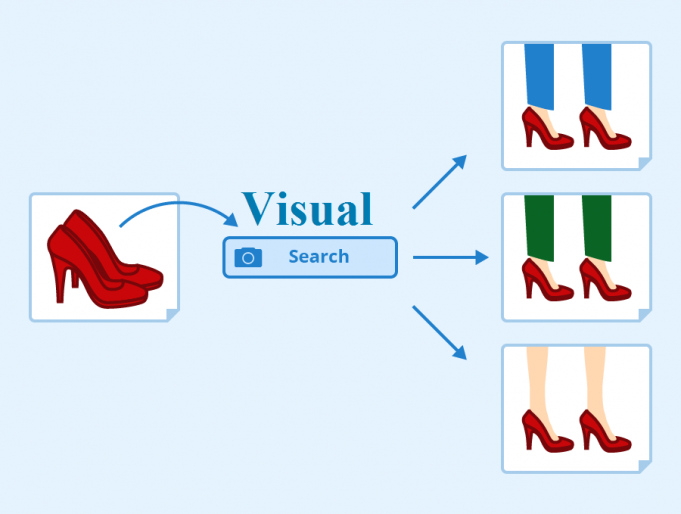Visual search has been around in some form or the other, but it hasn’t always been effective. In the past few years, new technologies have enabled companies to develop more advanced search capabilities. It has become a tool that is reliably useful, particularly those in the e-commerce space. In this article, we’re taking a look at the current landscape and outlining the ways this technology can benefit brands
The visual search landscape
As visual search technology improved, it became part of the way consumers search for products online. This means that consumers use an image as a search query, as opposed to a keyword. It’s the difference between uploading an image of a short-sleeve red t-shirt into an app or search engine. Nearly 30% of Google searches now return visual results; and Pinterest Lens reported more than 600 million monthly users.
The bottom line: How visual searches benefit
It presents more opportunities to be visible in search results and does not tend to cannibalize text search. It is often used to resolve queries that consumers may have difficulty verbalizing. If you see a specific type of plant, for example, it will be very difficult to come up with a text-based query to satisfy the search. On the other hand, if you have an image and conduct a search, you’ll find what you want. Brands can expand their visibility through a visual search.
It delivers better results to consumers and retailers should consider partnering with a search provider to embed visual search into their websites and apps, and benefit from incorporating the shopping experience. The easier it is for a user to find what they’re looking for, it will shorten the path to conversion.
Adapting your brand’s marketing approach to harness visual search
Invest in quality product images, as consumers use their own images to generate results in search. But as a brand, it’s in your best interest to make sure the images you return in the results are enticing. It’s essential to invest in the quality of your images as these images are going to sell consumers on your brand and products.
Optimize images
One of the simplest things brands can do with the visual evolution of search is to optimize their image catalog. According to these new standards, take the steps required to inventory the existing image and reconfigure image tags. Based on the guidelines from specific platforms, such as Google and Pinterest, for example. Also, establish a protocol for how new images will be optimized as they are published.
Search for partnerships and consider whether incorporating visual searches will benefit your users. Does it satisfy a need and add value to the experience? If so, search for partnerships with providers to provide this benefit to users. If you’re not yet convinced, consider a smaller rollout to test and iterate.
A new frontier in search
As visual search technology comes into its own, it’s inevitable that fewer searches will be carried out using text-based queries. Also, it’s useful and effective as visual search is still in its infancy, but brands should harness the opportunities. This presents a new frontier in search engine optimization by optimizing now for an increasingly image-based search landscape.









